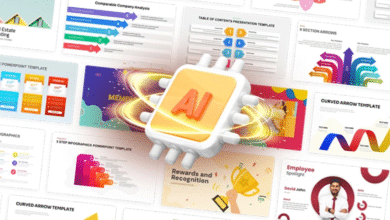How Carbon Steel Profiles Are Shaping the Future of Engineering and Design

In the evolving world of engineering and design, the choice of materials plays a pivotal role. Among these materials, Q215b angle steel and carbon steel profiles have emerged as crucial components. These materials not only support structural integrity but also enhance design possibilities. This blog post delves into how these steel profiles are shaping modern engineering and design, exploring their applications, benefits, and future trends.
What is Q215b Angle Steel?
Q215b angle steel is a type of carbon steel characterized by its unique properties and applications. This steel is commonly used in construction due to its strength and durability. It is an L-shaped steel profile, which makes it ideal for various structural applications.
Key Characteristics of Q215b Angle Steel
Q215b angle steel is known for its high tensile strength and resistance to deformation. These qualities make it suitable for supporting heavy loads and providing stability in construction projects. Additionally, Q215b angle steel is relatively easy to fabricate, which simplifies the construction process and reduces overall costs.
Applications of Q215b Angle Steel
Q215b angle steel is used in a wide range of applications. In construction, it is often employed in the framework of buildings, bridges, and other infrastructure projects. Its versatility extends to industrial applications as well, where it supports machinery and equipment.
The Role of Carbon Steel Profiles in Modern Engineering
Carbon steel profiles, including Q215b angle steel, are fundamental in modern engineering. These profiles are designed to meet specific structural needs while ensuring cost-effectiveness and performance. Their role extends beyond traditional uses, contributing to innovations in engineering and design.
Advantages of Carbon Steel Profiles
Carbon steel profiles offer numerous advantages. They are known for their high strength-to-weight ratio, which makes them ideal for structural applications where both strength and weight are considerations. Moreover, carbon steel profiles are highly customizable, allowing engineers to design structures that meet specific requirements.
How Carbon Steel Profiles Enhance Design Flexibility
One of the most significant benefits of carbon steel profiles is their design flexibility. These profiles can be easily shaped and welded to create complex structures. This flexibility allows architects and engineers to push the boundaries of design, resulting in more innovative and aesthetically pleasing structures.
Trends Shaping the Future of Carbon Steel Profiles
The future of carbon steel profiles is bright, with several trends influencing their development and use. These trends reflect advancements in technology, sustainability, and design.
Advances in Manufacturing Technology
Recent advancements in manufacturing technology have significantly impacted carbon steel profiles. Innovations such as automated fabrication processes and precision cutting techniques have improved the accuracy and efficiency of producing these profiles. These advancements enable the creation of more complex and customized designs, enhancing the overall capabilities of carbon steel profiles.
Increasing Focus on Sustainability
Sustainability is becoming a crucial consideration in engineering and design. Carbon steel profiles are increasingly being designed with environmental impact in mind. This includes the use of recycled materials and the development of more energy-efficient manufacturing processes. By focusing on sustainability, the industry is working towards reducing its carbon footprint and promoting eco-friendly practices.
Integration with Smart Technologies
The integration of smart technologies into carbon steel profiles is another emerging trend. Smart sensors and monitoring systems can be embedded into these profiles to provide real-time data on structural performance. This information can be used to optimize maintenance schedules and improve safety, making structures more resilient and efficient.
Frequently Asked Questions
What are the primary applications of Q215b angle steel?
Q215b angle steel is primarily used in construction for structural support in buildings, bridges, and industrial applications. Its strength and durability make it suitable for various load-bearing requirements.
How does carbon steel compare to other types of steel?
Carbon steel is known for its high strength and versatility. Compared to other types of steel, such as stainless steel, carbon steel is generally more cost-effective but may require additional treatment to prevent corrosion.
What are the benefits of using carbon steel profiles in design?
Carbon steel profiles offer high strength, flexibility in design, and cost-effectiveness. They can be customized to meet specific structural needs and support complex designs, enhancing both functionality and aesthetics.
How is the sustainability of carbon steel profiles being improved?
Sustainability is being improved through the use of recycled materials, energy-efficient manufacturing processes, and innovative designs. These practices help reduce the environmental impact of carbon steel profiles and promote eco-friendly construction.
What future trends should we expect in the use of carbon steel profiles?
Future trends include advancements in manufacturing technology, a focus on sustainability, and the integration of smart technologies. These trends will enhance the performance, efficiency, and environmental impact of carbon steel profiles.
Conclusion
Q215b angle steel and carbon steel profiles are essential components in the fields of engineering and design. Their unique properties and versatile applications make them indispensable in modern construction and industrial projects. As technology advances and sustainability becomes a priority, the role of these materials will continue to evolve, shaping the future of engineering and design.
Understanding and leveraging the capabilities of Q215b angle steel and carbon steel profiles can lead to more innovative, efficient, and sustainable structures. By staying informed about the latest trends and developments, professionals in the industry can make the most of these materials and drive progress in their respective fields.




